Introduction
Le Claire is a storied river town, a classic Mississippi River port that boomed in the mid-19th century before suffering through a bust period as river commerce declined. Le Claire is located at an area along the Mississippi known as the Point, the spot where the river makes a sharp turn to the west, and at the head of the rapids that the Sauk and Meskwaki called Pau-pesha-tuk (“Agitated Water”).
Visitor Information
The LeClaire Information Center (117 S. Cody Rd.; 563.289.4242, x61135) is the source for local information and brochures.
History
In the late 1700s, French soldiers built Marin’s Post at the mouth of the Wapsipinicon River, just north of Le Claire, to facilitate trade with Indian nations. A hundred years later, the American Fur Company built a trading post on Smith Island, just south of Le Claire. That island gets its name from another early settler, Martin Smith, who arrived in 1830 and lived in a bark-covered hut for three years until his log cabin was finished.
Antoine Le Claire, the founder of Davenport and major landowner for what became Moline, also owned land further north at the head of the rapids. He started planning a town in 1833 but couldn’t get it platted until 1836. In the meantime, Eleazor Parkhurst arrived in the same area in 1834 and was soon joined by his brother, Sterling. (A third Parkhurst brother, Waldo, arrived in 1838 and operated a store for 40 years.) The brothers established a village that became known as—surprise—Parkhurst (but was renamed Berlin around 1842). In the 1830s and 1840s, riverboats landed at a small harbor near the beginning of the rapids. In spite of this early landing, both Berlin and Le Claire grew slowly through the 1840s. In 1848, each town counted just 15 buildings.
By the early 1850s, however, the economy was picking up steam. New businesses included mills, lime kilns, factories churning out plows and bricks, and a busy quarry that supplied limestone for the first buildings at Rock Island Arsenal and for “Old Main” at Augustana College. German immigrants began pouring into the area, undeterred by an unusually wet trio of years that triggered deadly outbreaks of malaria and cholera.
Antoine Le Claire sold the land between the two villages to a firm headed by Adrian Davenport (no relation to George Davenport, the namesake for the town downriver), who had moved to the area in 1846 and built a sawmill. For a short time, this section was known as Middletown. They mapped out an ambitious plan for a community on 80 acres of land with room enough for 20,000 residents. In 1855, the town of Le Claire was incorporated, merging the two villages with the newly acquired land. Adrian Davenport was the first sheriff of Scott County (1838–1846) and later became the first mayor of Le Claire.
Le Claire’s position at the head of the rapids ensured it would have a prominent role in river commerce. The rapids created a need for a special type of pilot—a rapids pilot. Philip Suiter, who arrived in 1836, became the first licensed rapids pilot; many more followed, including three of his sons and a grandson.
Le Claire also had a booming business from its boat yard, the Le Claire Marine Railway. The yards built several steamboats and repaired thousands of others. With the busy river trade came a busy saloon industry. Le Claire, like many thriving ports, had dozens of saloons; the southernmost one was called “The First Chance” and the northernmost was called “The Last Chance” (or so the story goes!). LeC laire’s shot at the big time was ultimately killed by the Panic of 1857. Businesses closed and the town’s population dwindled. Davenport went on to become the big city, while Le Claire would remain a small town.
After the Civil War, logging and sawmills boosted the economies of towns all along the Mississippi, and Le Claire was no exception. While Le Claire never had a large number of sawmills, the rapids guaranteed a constant demand for rapids pilots. One Le Claire resident, Sam Van Sant, perfected the design for a steamboat to help guide the massive log rafts floating down the Mississippi.
Competition from the railroads triggered the demise of river commerce in the early 20th century and led to a significant decline for Le Claire, not just due to the direct loss of steamboat traffic, but also because of the closing of several other businesses, including the boatyards, the Kattenbracher Foundry, the quarry, and the brick and tile factory. Most of the remaining population commuted to work in other cities.
Le Claire continued to lose population through the 1930s, as car ownership increased and people could drive to Davenport to do their shopping. Le Claire’s population decline finally ended when the Quad Cities landed several new factories and thousands of new jobs. This time, expanding car ownership helped Le Claire, as many people moved out of central cities and into new housing developments. Le Claire, just a short 15-minute drive to Davenport, began to develop into a residential suburb of the Quad Cities. Today, tourism is a major industry.
Exploring the Area
The Buffalo Bill Museum (199 N. Front St.; 563.289.5580) is jam packed with memorabilia, photos, and antique tools. Highlights include the Red Cross quilt made in 1919 and embroidered with the names of 834 donors, the creepy horsehair coats, and the dog-powered butter churn. Also on-site is the Lone Star, a steam-powered paddlewheel towboat that was built in 1869 and operated on the Mississippi River for a remarkable 100 years (and piloted for many years by Orrin Smith, the last of the famous rapids pilots).
If you’ve seen the TV show American Pickers, check out Antique Archaeology (115 1/2 Davenport St.; 563.265.3939), the store run by the show’s stars Mike Wolfe, Frank Fritz, and Danielle Cushman, where you may be able to find some fun antiques among all the Antiques Archaeology merch.
Just west of the museum along the riverfront near the picnic pavilion, there is a marker where the Green Tree Hotel once stood. The large elm with an umbrella-shaped canopy was a popular spot where rapids pilots would sit in the shade on a summer day waiting for a job or, more commonly, men would spend the night after an evening of boozing. The tree eventually gained the nickname of the Green Tree Hotel (it sounded better than telling your parents that you spent the night sleeping under a tree on the levee) and it became known throughout the US. Sadly, the tree was killed by Dutch Elm disease in 1964 and cut down.
Getting on the River
The Riverboat Twilight (815.777.1660) offers 90-minute sightseeing cruises, as well as 2-day trips from LeClaire to Dubuque and back from Memorial Day to mid-October.
Entertainment and Events
Festivals
When it comes to festivals, you just can’t beat TugFest (563.289.3946). Thousands of people descend upon the small towns of LeClaire, Iowa and Port Byron, Illinois on the second weekend of August for a spectacle that is part county fair and part athletic competition. For three hours, the Mississippi River is closed to all commercial traffic. Organizers lay out 2,400 feet of rope and stretch it from bank to bank so teams of 20 or so from Iowa and Illinois can compete. While the individual tugs are taken seriously, you can’t help but notice that the whole event feels like one big gag and everyone is in on it. Carnies line the riverfront, armed with old-school games of chance that entice suckers with large stuffed-animal prizes. When you get hungry, you can have a hand-dipped corndog, then choose either a fried Twinkie or fried Snickers bar for dessert (or both, I suppose, if you are a true glutton). Bring a chair and get there early to stake a claim to a good spot to watch the action. (Check out my Tugfest photo album.)
**LeClaire is covered in Road Tripping Along the Great River Road, Vol. 1. Click the links above for more. Disclosure: This website may be compensated for linking to other sites or for sales of products we link to.
Where to Eat and Drink
Kick off the day with a tasty coffee or tea drink from Cody Road Coffee (114 N. Cody Rd.; 563.289.2436), then enjoy it at a sidewalk table and watch the world hurry by.
For something completely different, consider spending an afternoon sipping locally-made spirits like gin and vodka at the Mississippi River Distilling Company. They buy their raw materials from local farmers and create their beverages on-site in Le Claire. Free tours are offered regularly, and you get to finish your tour with a free sample. You can also relax with a cocktail at their Cody Road Cocktail House.
If spirits aren’t your thing, perhaps wine is. You can sample and buy locally crafted wines at the Wide River Winery Tasting Room.
And if you don’t care for spirits or wine, you still have options! How about sipping local craft beer at the Green Tree Brewery? They have several different beers on tap and a spacious outdoor patio to enjoy your beer while watching the river flow.
Where to Sleep
There are few lodging options in the immediate area. Your best bet is to head into the Quad Cities for a room, unless you want to overpay for a bed at one of the three chain motels at the Interstate 80/US 67 interchange.
Moderate and Up
The Old Mill Guest House (419 N. Cody Rd.; 309.314.7702) rents two units in a historic riverfront house. The downstairs unit comes with two bedrooms and small kitchen. Upstairs, you’ll find a cozy apartment with a king bed and small kitchen. Each unit has a deck facing the river.
Resources
- Post Office: 310 Jones St.; 563.289.4785.
- LeClaire Community Library: 323 Wisconsin St.; 563.289.4242.
Where to Go Next
Heading upriver? Check out Princeton.
Heading downriver? Check out Pleasant Valley.
Community-supported writing
If you like the content at the Mississippi Valley Traveler, please consider showing your support by making a one-time contribution or by subscribing through Patreon. Book sales don’t fully cover my costs, and I don’t have deep corporate pockets bankrolling my work. I’m a freelance writer bringing you stories about life along the Mississippi River. I need your help to keep this going. Every dollar you contribute makes it possible for me to continue sharing stories about America’s Greatest River!
©Dean Klinkenberg, 2024, 2021, 2018,2013,2011
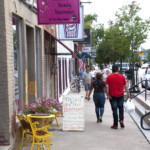

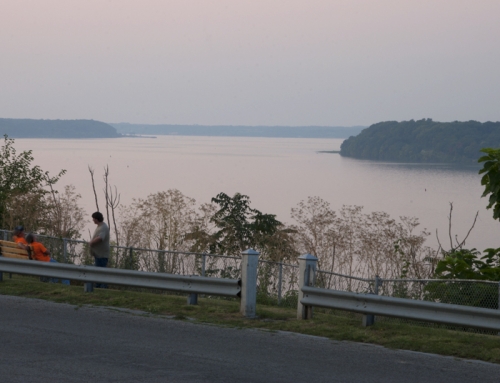
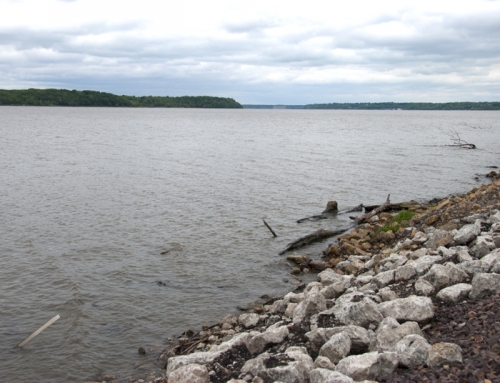
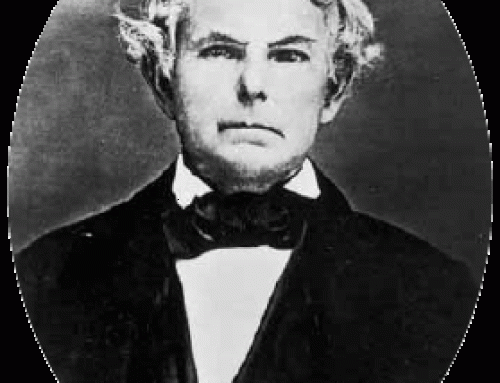
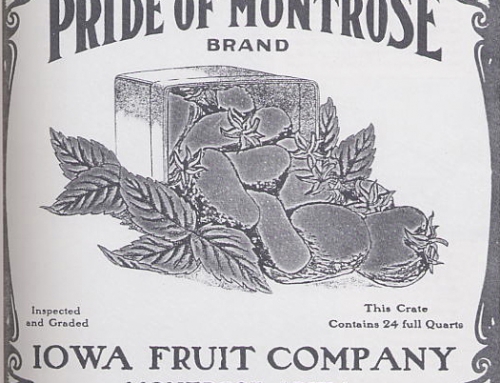
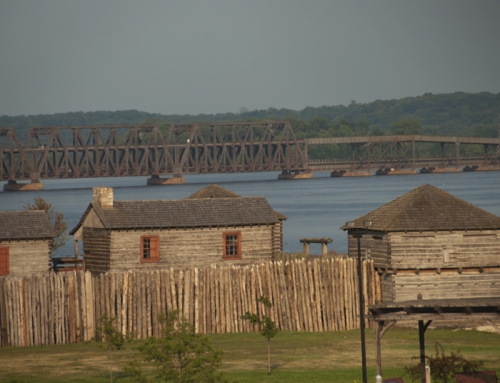
my gggrandfather was an entertainer on a mississippi riverboat 1840. is there any way we can find out the boat staff so that i will know which one he was on?
thanks for your help. his name was Jesse Chavers